- Quick Read
- Deep Read ( 15 Min. )

Why is Christian Science in our name?
Our name is about honesty. The Monitor is owned by The Christian Science Church, and we’ve always been transparent about that.
The Church publishes the Monitor because it sees good journalism as vital to progress in the world. Since 1908, we’ve aimed “to injure no man, but to bless all mankind,” as our founder, Mary Baker Eddy, put it.
Here, you’ll find award-winning journalism not driven by commercial influences – a news organization that takes seriously its mission to uplift the world by seeking solutions and finding reasons for credible hope.
Explore values journalism About usIn Today’s Issue
Monitor Daily Podcast
- Follow us:
- Apple Podcasts
- Spotify
- RSS Feed
- Download
TODAY’S INTRO
New Hampshire shows democracy at its best
What good is democracy?
That’s a question that’s been on my mind this week as I wrapped up the latest in the Monitor’s series “Democracy Under Strain.” (This one’s about the power of voting.)
When you focus on the faults, it’s easy to wonder about the system’s future. And right now America’s democratic government seems to be shedding nuts and bolts.
But democracy at its best is a system that allows open discussion of differences and then their resolution. It’s a way to manage conflict without actual fights.
New Hampshire showed that this week.
The issue was fraught: whether to abolish the death penalty. Both sides had heartfelt positions. Those who wanted to keep the penalty framed it as support for law enforcement. Those in favor of abolition cited the disproportionate number of minorities on death row and the risk of executing innocent people.
The result was close. Republican Gov. Chris Sununu is a staunch death penalty supporter. He’d vetoed an earlier repeal bill. Then on May 30 both the state House and Senate overrode his veto by one vote.
New Hampshire became the 21st state to ban capital punishment.
One quote stood out as reflective of democratic values. Before casting his ballot, Republican state Sen. Herbert French said he supported law enforcement personnel and their families. But he said he’d vote against the death penalty.
“My vote will be made because this vote is about our state and about what kind of state we are all going to be part of,” said Senator French.
Now on to our five stories of the day, which include a deep dive into the lessons of Bernie Sanders’ years as mayor of Burlington, Vermont, and a look at how indigenous people in Canada are flipping expectations and planning to benefit from resource extraction.
Share this article
Link copied.

Help fund Monitor journalism for $11/ month
Already a subscriber? Login

Monitor journalism changes lives because we open that too-small box that most people think they live in. We believe news can and should expand a sense of identity and possibility beyond narrow conventional expectations.
Our work isn't possible without your support.
A deeper look
The roots of Bernie’s revolution
Some see Bernie Sanders as too liberal and uncompromising to be president. But his track record as mayor reveals a pragmatic side.
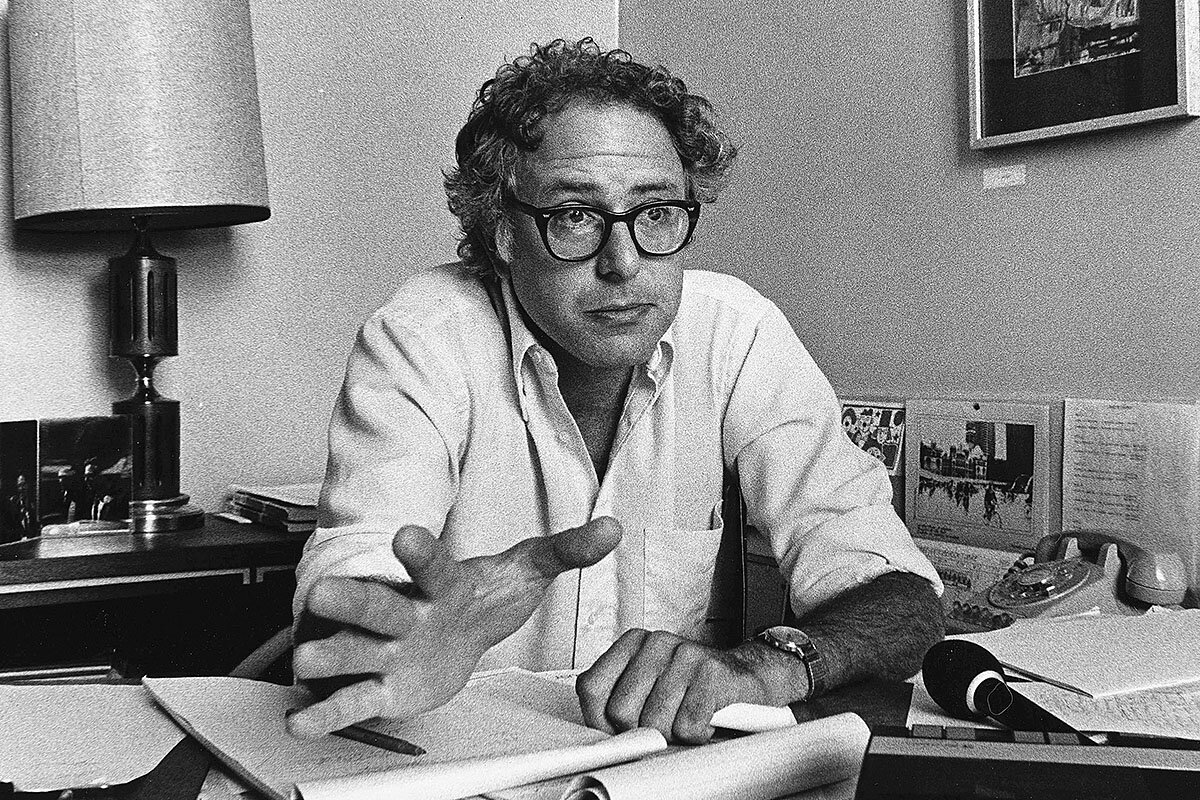
When Bernie Sanders won his first election – by 10 votes – he took out a yellow legal pad and scribbled out his inauguration address as the new mayor of Burlington, Vermont.
It is, more or less, the same speech he has been giving ever since – and offers clues to his popularity 40 years later as he emerges as one of the front-runners for the Democratic presidential nomination, capping one of the most improbable rises in modern American politics.
But even as the long-time crusader sees his ideas gaining momentum, some say he’s too liberal and uncompromising to implement them as president. His time as mayor reveals a pragmatic side, however. Yes, he championed the plight of the poor and railed against the Reagan administration’s military adventures in Latin America, but he also forged alliances with local Republicans, who appreciated his fiscal conservatism.
“I think a lot of the myth about Bernie Sanders is ‘this is a guy that’s just yelling in the back of the room,’ ” says Tad Devine, chief strategist for Mr. Sanders’ 2016 campaign. “But his track record as [mayor] is to the contrary.”
The roots of Bernie’s revolution
It was a quixotic bid from the start. Bernie Sanders was what Vermonters derisively call a “flatlander” – someone who moved to the state after growing up elsewhere, in this case New York City.
True, Mr. Sanders had quickly immersed himself in the rural and rustic ways of Vermont. He lived his early years in a converted maple sugarhouse with no running water. He bathed in a cold stream outside. The ritziest thing on his property was a new outhouse.
He had no political experience. Although he had run for the U.S. Senate on the little-known Liberty Union Party ticket in 1972, he garnered only 2% of the vote. Four years later, he would run for governor, capturing a reed-thin 6% of the vote.
Yet here he was again, in 1981, at the age of 39, seeking the mayorship of Burlington, the state’s largest city. A friend had convinced him that there was a reservoir of support for him in the city’s working-class neighborhoods. So he went door to door as an independent.
His competition was hardly intimidated. “All Bernie wants to talk about is Vietnam and the Third World,” said Mayor Gordon Paquette, the five-term Democratic incumbent. Mr. Paquette miscalculated, however. When the ballots were counted, and recounted, Mr. Sanders had won by 10 votes.
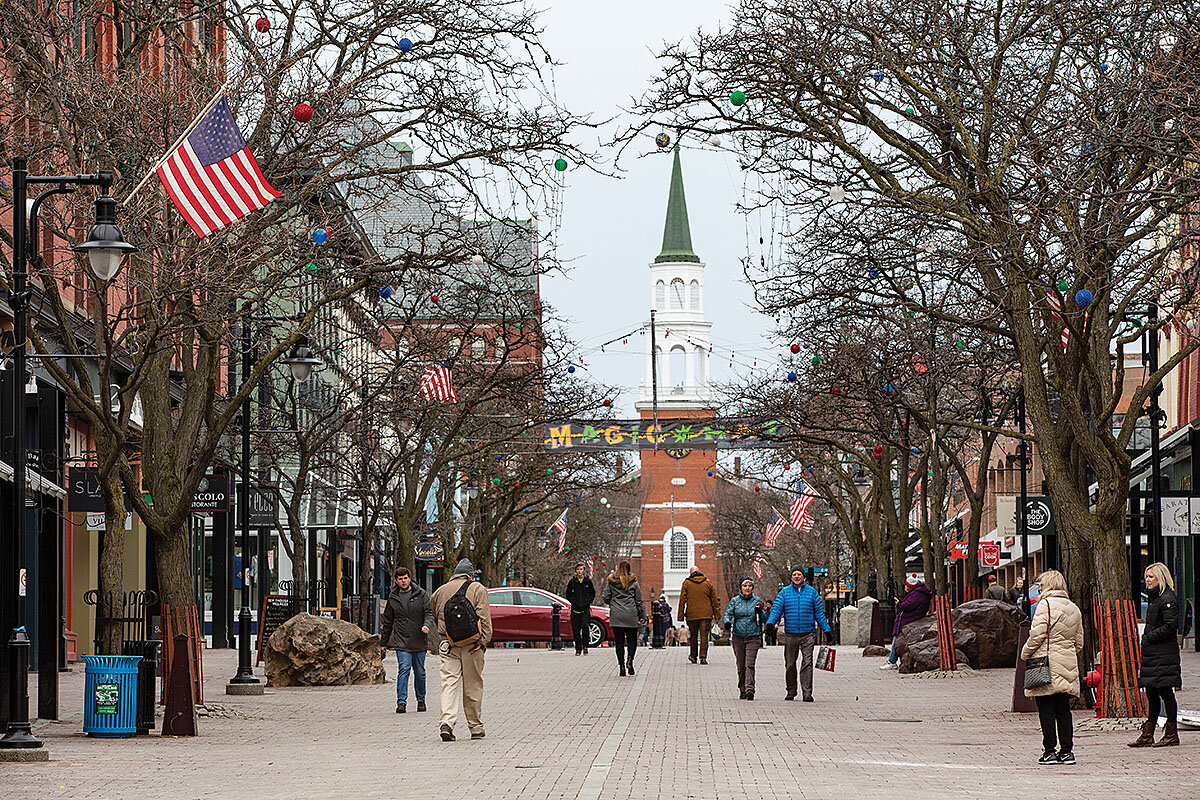
The mayor took out a yellow legal pad and scribbled out his inauguration address. It is, more or less, the same speech he has been giving ever since – and offers clues to his popularity 40 years later as he emerges as a front-runner for the Democratic nomination for president, capping one of the most improbable rises in modern American politics.
For decades, the man from Vermont with the self-described democratic socialist ideas was just as likely to be the subject of a punchline than a headline. Then came 2016. No one predicted that Mr. Sanders would almost topple a presumptive heiress to the Democratic throne. Now he’s back, an instant top-tier presidential contender, the leader of a broad-based progressive movement that seems remarkably less improbable than four years ago.
His prominence is rooted in part in his consistency, the trumpeting of the same issues since his days in Burlington City Hall. He has been talking about income inequality, a lack of affordable health care, and the follies of an over-interventionist U.S. foreign policy since before fellow presidential candidate Pete Buttigieg was born. Those convictions remain, independent of his new rock star status.
“He would be doing this even if he hadn’t made any progress [in politics] at all,” says Terry Bouricius, who in the 1970s rattled around Vermont with Mr. Sanders in an old Volkswagen bug, dropping him off at AM radio stations for campaign interviews.
Yet his ideological purity is also a weakness. Many believe Mr. Sanders is too liberal for America and is tailor-made to be a crusader but not a chief executive.
“In some ways he’s better as a standard-bearer,” says Matthew Dickinson, a political scientist at Middlebury College in Vermont, who notes that supporters like that about him. Based on his legislative record, he adds, “He’s much better at articulating the righteous indignation for the country’s failure to achieve what he believes in than making the compromises necessary to seeing [that] those principles are achieved.”
Yet Mr. Sanders does have a pragmatic streak that often gets overlooked. It was evident in his days fixing potholes as mayor, has surfaced from time to time in the U.S. Senate, and is infusing his stances on some key issues today.

In many ways, his sudden rise says more about the country than him. A growing number of Americans are fed up with paltry paychecks and overpriced college and medical bills. It’s a principal reason he has raised more money and amassed more donors than any other Democratic candidate. He attracts concert-sized crowds from Berkeley to Brooklyn. He is polling better than all but one of his 20-plus opponents.
Yet he is hardly a shoo-in for the nomination. He’s still, in the eyes of many, an “old white guy” at a time when many Democrats are yearning for youth and diversity. Many other candidates in the most crowded Democratic field in modern history are espousing the same left-wing views that he has championed for years. Why him instead of them? Indeed, the central question facing Mr. Sanders as the 2020 campaign ratchets up may be a simple one:
Has history passed him by, just when it seemed to be arriving?
Mr. Sanders may hate war, but he loves a good battle. Winning the Burlington mayoral election was just his opening salvo. Then came the real fight. The Democratic establishment, which had controlled the city for 30 years, still held most of the other important positions – including 8 of 13 seats on the Board of Aldermen. And they weren’t about to cede any more territory.
At Mr. Sanders’ first board meeting, his opponents fired his secretary. They blocked his nominees. They put his items last on meeting agendas and made sure time ran out before they could discuss them. The city clerk locked the door between Mr. Sanders’ office and the clerk’s office and intercepted the mayor’s mail.
Mr. Sanders pushed back, getting his secretary reinstated, taking the city to court over his nominees, and setting up volunteer committees to circumvent the stonewalling. “His election brought into the public arena a basic conflict over the direction and purpose of urban life,” writes Renee Jakobs in a 1983 Cornell University master’s thesis on Mr. Sanders’ first term. “His opponents refused to acknowledge this as the cause of the conflict in City Hall. They blamed his ‘abrasive personality’ and ‘confrontational style.’”
To be sure, Mr. Sanders could get fiery, stomping out of meetings or banging his fist on the table. But however much his opponents tried to thwart him, it had the opposite effect.
“Bernie found the resistance in 1981 really energizing,” says Mr. Bouricius, a progressive candidate who had gotten elected as an alderman that same year and was one of only two Sanders allies on the 13-member board. “It was an exciting time. It was a political battle.”
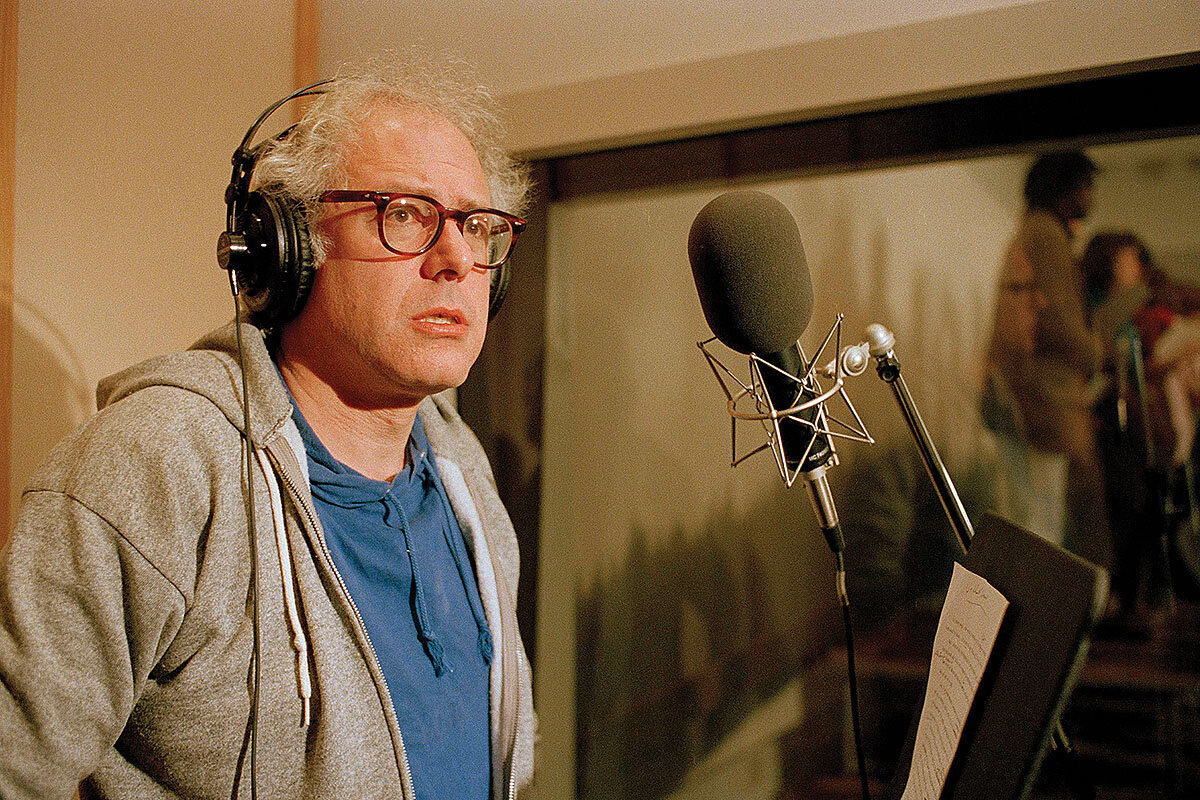
He recalls Mr. Sanders holding Sunday night strategy meetings with allies in private homes – a group that was dubbed his “kitchen cabinet.” “The powers that be were trying to completely obstruct the way he was trying to govern,” says John Franco, his assistant city clerk who was part of the group.
Mr. Sanders and his team sought ways to circumvent the Democrats, setting up mayoral councils on shoestring budgets. He started free outdoor concerts, a Little League baseball team for low-income families, and a tree-planting program.
His attempts to promote civic engagement dovetailed with a strategy of building a progressive coalition to reform city government. And the Democrats helped, unwittingly. The Democratic chairwoman had called on voters to “halt the socialist ‘fungus’ growing in Burlington”; instead, they voted her out. Three more allies of the mayor got elected, giving the “Sanderistas” control of more than a third of the board. “It was revolution,” says Mr. Franco. “There’s no other way to describe it.”
When he first won the mayoral race, fan letters poured in, not only from around Vermont but from across the country. One even came from China. Many of the supporters heralded the election of a socialist mayor as a light in the Reaganesque darkness.
But at least one man was not so enraptured. Antonio Pomerleau, a self-made millionaire and Burlington’s biggest landowner, had been castigated by Mr. Sanders in the campaign over plans to build waterfront luxury condos. Shortly after the election, the developer walked into the mayor’s office.
“You’re the mayor, but it’s still my town,” he declared. In the course of their three-hour conversation, though, Mr. Sanders assured the developer that “if you get some good ideas for the city, I’ll back you up.”
And he did. That unlikely partnership proved to be central to one of Mr. Sanders’ greatest accomplishments in Burlington – turning the unsightly industrial area along Lake Champlain into a public park. In fact, Mr. Sanders proved surprisingly pragmatic, for all his idealism.
He has cited Martin Luther King Jr. and Eugene V. Debs, a founding member of the Socialist Party of America, as having had the greatest influence on his political thinking.
Mr. Sanders was among those in 1963 who heard King give his “I have a dream” speech in Washington. The same year, he worked on an Israeli kibbutz, which often flew the Soviet flag.
Back in America, red-baiting was still popular. But Mr. Sanders openly identified himself as a socialist and chose red for his campaign color. “We just owned it,” says Mr. Bouricius.
As mayor, Mr. Sanders established sister city relationships with municipalities in the Soviet Union and Nicaragua and was one of the only mayors in the United States to have a foreign policy. But his attention to practical details, such as keeping the budget in check and repairing roads, garnered him support well beyond his liberal base. Republican aldermen increasingly voted with him.
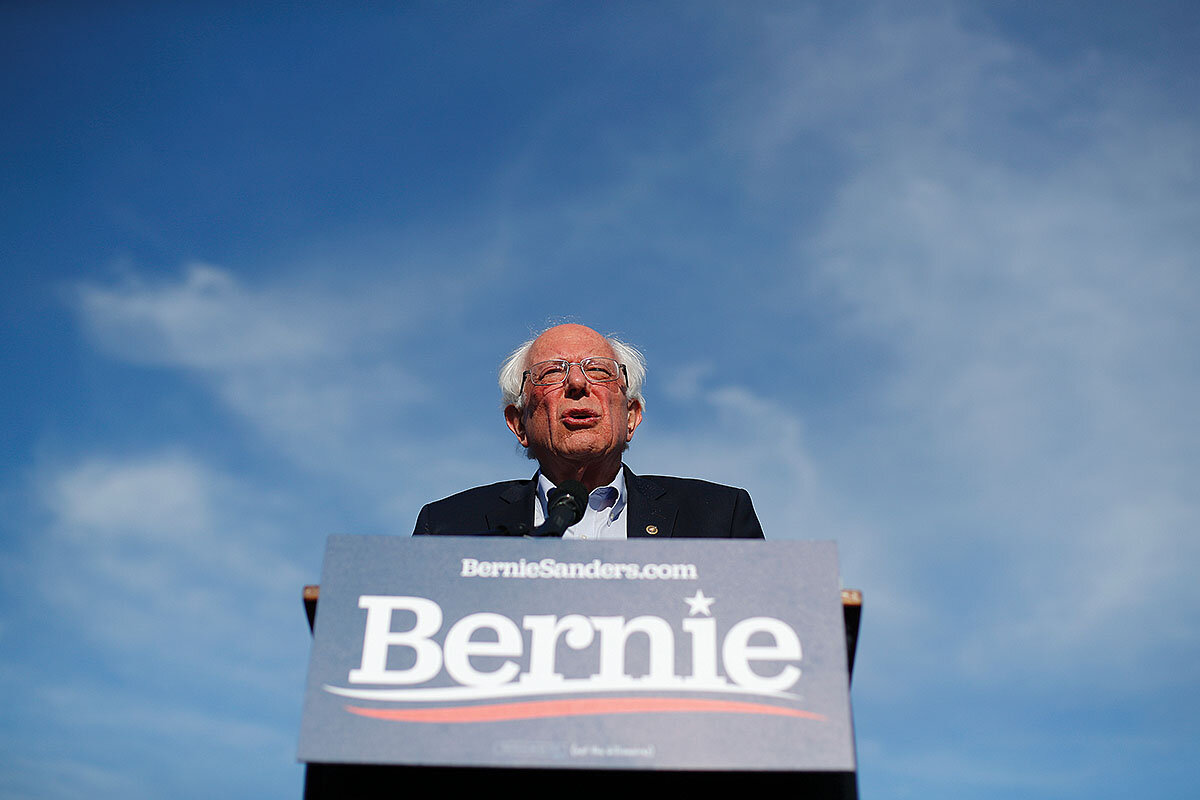
“I think a lot of the myth about Bernie Sanders is ‘this is a guy that’s just yelling in the back of the room,’” says Tad Devine, chief strategist for Mr. Sanders’ 2016 campaign. “But his track record as a chief executive of the largest city in his state is to the contrary.”
One of Mr. Sanders’ early appointees saved the city $20,000 in his first six months by centralizing purchasing. His administration moved the city’s cash into higher interest-bearing accounts, yielding an additional $70,000 a year. He initiated a competitive bidding process for the city’s insurance contracts, cutting costs by 40%.
Mr. Sanders also led a national search for a new city treasurer, replacing the incumbent who was overseeing $50 million in city finances despite having no experience in accounting, according to Ms. Jakobs’ thesis. The new treasurer discovered a budget surplus of $1.9 million that had gone unaccounted for amid the city’s poor bookkeeping. Mr. Sanders used half a million dollars of it to repair city streets.
The man who championed the plight of the poor, who wrote letters admonishing the Reagan administration to end its military adventures in Latin America, was embracing fixing potholes and plowing roadways.
“You can talk all you want about El Salvador and the international problems of capitalism, but [if the] sidewalks [are not] plowed we are not doing the job we were elected to do,” said Mr. Sanders at the time. “But, if one becomes just more efficient, we could lose the reason we were elected.
“You have to have a vision. You have got to talk about what society, what life, can be like,” he added.
On a winter day after he became a congressman, Mr. Sanders and his team were traveling to an event at the state capital when they crested a hill and dropped down into Elmore, population 855. “Hey! There are ice fishermen out there! Stop the car!” Mr. Sanders said, according to an aide who was with him at the time.
His staff pointed out that they were going to be late for their meeting, but Mr. Sanders insisted and they all trudged out onto the frozen lake, in dress shoes, to talk to them. The vignette is indicative of why, across Vermont, almost everyone has a Sanders story.
“He’s our guy, he’s Bernie, he’s our crotchety old uncle – you see him every Fourth of July or Memorial Day parade and he scowls at you and you say, ‘There goes Bernie,’” says Professor Dickinson of Middlebury College.
Mr. Sanders’ crusading style and gruff demeanor endear him to many Vermonters, who have always valued a sense of independence dating back to Ethan Allen and his Green Mountain Boys in the Revolutionary War. At the entrance to his Senate office in Burlington, Mr. Sanders keeps a Norman Rockwell painting, “Freedom of Speech,” that was inspired by a town meeting at which one man “rose among his neighbors and voiced an unpopular view.”

Sanders is known for attracting an effective and responsive staff and working them hard, which is something he demands of himself as well. As a runner, he once clocked a 4:37 mile. The 77-year-old senator’s idea of a vacation is driving around West Virginia talking to coal miners.
“It’s not a job – it’s a calling,” says Mr. Bouricius, describing Mr. Sanders’ attitude. “You’re not here to help me get elected, you’re here to change the world.”
But there is also a sensitive side to Mr. Sanders that is not well known, says Phil Fiermonte, who worked for him for 20 years. At one point, Mr. Fiermonte was going through a bad experience and had to take some time off.
“He called me every day to see how I was doing at an incredibly stressful time politically for him,” says Mr. Fiermonte. “Anyone from his political family – Bernie’s there.”
Mr. Sanders seems most in his element when he’s in places like Elmore, with salt-of-the-earth Vermonters. Though Jewish himself, he has credited Pope Francis’ focus on the world’s dispossessed with inspiring him to think about the need for a “moral economy,” channeling more of the world’s resources toward the common good. He took time off his 2016 campaign to visit with the pope and top leaders of the Roman Catholic Church at a Vatican conference on the subject.
Though he recently became a millionaire, he doesn’t flaunt it. His Burlington home is in a modest neighborhood, where neighbors see him out for walks or shopping at the local supermarket. He has been ranked one of the worst-dressed senators in Congress, although the rumpled lawmaker with the untamed hair jokes that he looks like a GQ model compared with his early days.
Mr. Sanders has won 15 elections in Vermont and today maintains a 64% approval rating among his constituents, the highest of any senator in the country.
“He maintained his popularity in Vermont because of his advocacy and how outspoken he was,” says Rep. Peter Welch, who replaced Mr. Sanders in the U.S. House when he moved on to the Senate. “But his explosion in popularity was based on the success of his first [presidential] campaign where it became clear that his appeal extended beyond just the progressive elements of the [Democratic] Party.”
His presidential run has boosted the visibility of Vermont, not only in the U.S. but abroad. Burlington architect Carol Stenberg recalls introducing herself to colleagues in New Zealand who responded, “Oh, you’re from Bernie-land!” Now his appeal is being tested as more candidates in the crowded 2020 Democratic primary field echo the ideas Mr. Sanders has touted for decades.
“I’m kind of bothered that the ... [other] candidates have co-opted his catch phrases,” says Josh Martin, a lawyer in St. Albans.

But some see Mr. Sanders’ call for things such as Medicare for all and free college education as pipe dreams – or worse. Just up the road from St. Albans, where coffee shops offer scones and maple lattes, Chad Hale owns the Back Country Sports gun shop. He stands in front of shelves brimming with ammunition as he runs a background check for a customer looking to buy a rifle.
“He’s never done anything for me,” says Mr. Hale. “I don’t believe in anything for free. ... Somebody has to pay for it. It’s going to come out of all our pockets, absolutely – all the working-class people.”
Others across the state question why people on heating assistance have a yard full of snowmobiles, or why taxpayers should bail out people who send their children to colleges they can’t afford.
“It’s a nice thought, but it’s not doable,” says Keith Wolstenholme one morning at the Thetford town dump. “I understand how [Mr. Sanders] wants to help people, but people also need to help themselves.”
It is that kind of sentiment that has made many analysts think Mr. Sanders could never beat Donald Trump. America, they say, just isn’t ready for a Socialist president. It’s also a reason many Republicans ardently hope the senator wins the nomination.
Despite such skepticism, Mr. Sanders has been able to win support across class and party lines in his home state. In the 2016 presidential primary, he won every town in Vermont, except for the ones without polling places, and beat Hillary Clinton by a margin of 22 points next door in New Hampshire. Across the country, Mr. Sanders won several conservative states, including Idaho, Utah, and Nebraska.
“That was not a surprise to a lot of us, because he did well in Vermont in statewide elections in the most conservative part of the state,” says Representative Welch.
Bill Rowell, a moderate Republican and dairy farmer, won’t say whom he voted for. But he credits Mr. Sanders for being responsive to farmers like him, who are facing a prolonged downturn in milk prices.
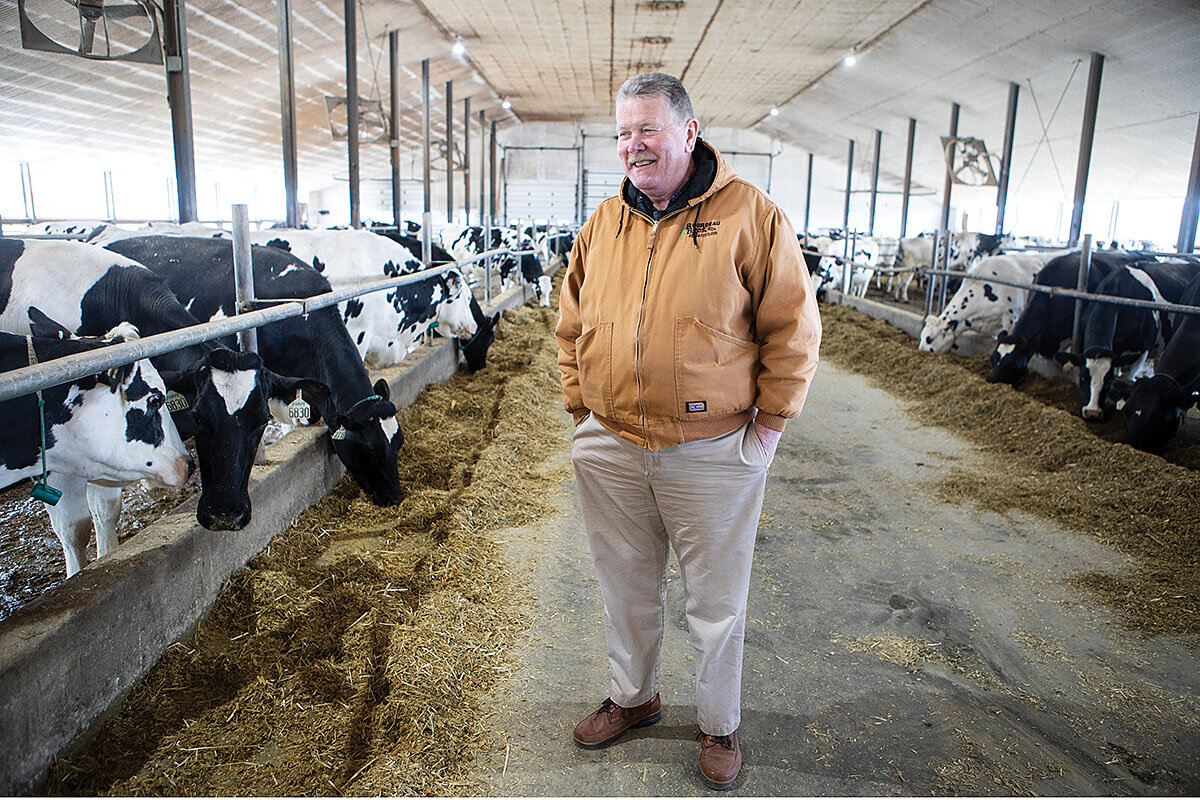
Mr. Rowell went to Washington to talk with his congressional delegation about fixing the problem, and Mr. Sanders sponsored a bill to stabilize milk prices. Though it didn’t become law, Mr. Rowell credits him for trying. “Even though Bernie’s political ideology differs from mine, I have to recognize him for his willingness to help the dairy farmers correct a dysfunctional system,” he says.
During his 16 years in the U.S. House, Mr. Sanders passed more roll call amendments (those in which the tally is officially recorded as opposed to a simple voice vote) when the chamber was controlled by Republicans than any other lawmaker.
When it comes to actually enacting laws, however, his track record over 28 years in Congress is far more limited. Of the 408 bills he has sponsored, only seven have become law – two of which involved naming post offices in Vermont, according to the website GovTrack.
But Mr. Sanders has had a hand in other key legislative victories. Most notably, he hammered out a bipartisan deal with Sen. John McCain of Arizona in 2014 on a $16 billion landmark bill to reform the Veterans Administration. More recently, Mr. Sanders got seven Republicans to support a measure he co-sponsored to end America’s involvement in the war in Yemen.
“When you’re a principled legislator and you don’t cut deals out of politics, what ends up happening is you find odd bedfellows,” including principled conservatives, says Mr. Sanders’ campaign manager Faiz Shakir.
Mr. Sanders’ track record in Congress and in Burlington has fueled a debate over how he would act as president – whether he could temper his ideological purity enough to build alliances and forge broadly acceptable policies. Some see him as pragmatic, taking the occasional go-it-alone stands, yes, but also voting with Democrats on major pieces of legislation and now and then siding with Republicans as well.
He has also been signaling on the campaign trail in recent months that he’s not a rigid ideologue, offering tempered comments, for instance, on impeachment and declining to support reparations for descendants of black slaves.
Yet Mr. Sanders remains one of the most consistently liberal politicians of the past 50 years, a man who is a true oddity in American politics: a lifelong independent running for the nomination of the Democratic Party, whose establishment he has often railed against, espousing democratic socialist ideals that Republicans love to ridicule.
But at least everyone knows where he stands. Just look at that first speech.
***
Sanders bio
Born: Sept. 8, 1941, in Brooklyn, New York
Father: Elias Ben Yehuda Sanders, who moved to the U.S. from Poland and became a paint salesman. Most of his family was killed in the Holocaust.
Mother: Dorothy Glassberg, daughter of Jewish immigrants from Poland and Russia
Early penury: Grew up in a 3 1/2-room apartment in Brooklyn. His mother once yelled at him for not walking farther to a cheaper grocery store when she sent him out with a shopping list.
Spouse: Jane O’Meara Sanders, whom he married in 1988 while mayor of Burlington, Vermont. They honeymooned in the Soviet Union. She has worked as a political adviser, college provost, and college president.
Children: Four, one (Levi) from a previous relationship of Mr. Sanders. The other three stepchildren are from an earlier marriage of Ms. Sanders.
Education: University of Chicago, Bachelor of Arts in political science
Religion: Jewish
Elections: Won 15, lost 8 – including coming in last in an election for class president in high school
Political career: mayor of Burlington for 8 years, U.S. representative for 16 years, and U.S. senator for 12 years (so far)
Athleticism: Former competitive runner. Ran 4:37 mile in high school.
Early lesson in capitalism: The owner of Mr. Sanders’ beloved Brooklyn Dodgers, whom he would watch from 60-cent bleacher seats, sold the team to Los Angeles interests.

A new indigenous environmental strategy: Buy the pipeline
Stereotypes hold that native peoples are against resource extraction like the pipelines. But what if indigenous ownership of such pipelines could provide environmental safeguards and tribal income?

- Quick Read
- Deep Read ( 6 Min. )
Resource extraction projects often pit environmentally minded indigenous communities against the energy industry. That is no less the case with the proposed expansion of the Trans Mountain pipeline, which runs from Alberta to British Columbia. But the Reconciliation Pipeline project is trying to bridge the gap by putting together an indigenous bid to buy a 51% stake in the pipeline.
It is far from clear that the players in the project will convince the government to sell. And they face resistance from many indigenous communities moving forward. But they see their offer as an alternative to messy pipeline politics that usually puts indigenous players on one side of a zero-sum game over resource extraction.
“The reality is we as First Nations are just as energy dependent as anyone else,” says Shane Gottfriedson, a former chief of the Tk’emlups te Secwepemc and a director of the project. “We’re living in homes that need heat. And we’re driving cars that require fuel or diesel. And I’d rather be sitting at the table making decisions, calling the shots as an owner and addressing all these concerns.”
A new indigenous environmental strategy: Buy the pipeline

The Trans Mountain oil pipeline cuts the traditional lands of the Secwepemc First Nation in British Columbia’s interior in two.
It might be a fluke of geography. But it delineates a clear battle line, as the project’s expansion has generated one of the most divisive environmental protests in Canadian history.
Since it was proposed in 2012, the upgrade, which would triple capacity of oil flowing from Alberta to the West Coast and beyond, has generated a drawn-out protest: between political parties; between the province of Alberta and the province of British Columbia; between east and west. No struggle has been more explosive than that between environmentalists and indigenous groups pitted against the energy sector.
But standing along the pipeline’s route on a recent day, Shane Gottfriedson, a former chief of the Tk’emlups te Secwepemc, one of 17 bands that make up this First Nation, is advocating for a middle ground: by having indigenous groups buy a majority stake in the pipeline.
Mr. Gottfriedson is a director of an indigenous-led venture that seeks to turn the pipeline from a point of conflict among indigenous peoples of western Canada to a pathway toward hope and greater prospects. Called the Reconciliation Pipeline (RP), the effort is putting together a bid to buy a 51% stake in the project, bringing financial benefits back to indigenous communities while ensuring the highest environmental standards, they say.
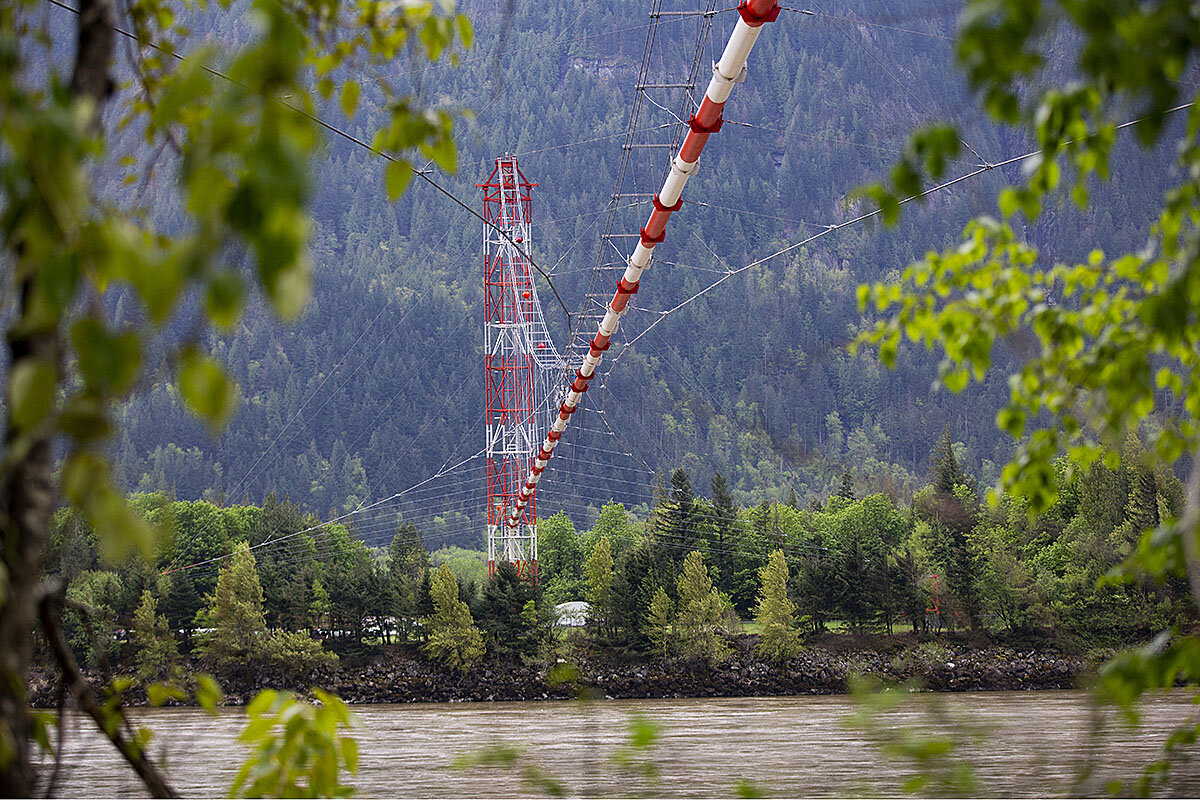
It is far from clear that the players in RP (which was renamed from Project Reconciliation) will convince the government to agree to its terms. And they face resistance from many indigenous communities moving forward, especially along the coast. But they see their offer as an alternative to messy pipeline politics that usually puts indigenous players on one side of a zero-sum game over resource extraction.
“Looking after and taking care of the land is always the priority for us,” says Mr. Gottfriedson on his band’s reservation, under which the pipeline is buried. “The reality is we as First Nations are just as energy dependent as anyone else. Yes, we live off the land. Yes, we care about the four-legged ones, the winged ones, the water, the air. … But we’re not living in teepees, we’re not living in pit houses. We’re living in homes that need heat. And we’re driving cars that require fuel or diesel. And I’d rather be sitting at the table making decisions, calling the shots as an owner and addressing all these concerns.”
Indigenous engagement in the natural resource economy
The Trans Mountain pipeline has dogged Canadian Prime Minister Justin Trudeau since the government purchased it from Kinder Morgan last year for $4.5 billion (Canadian; U.S.$3.3 billion) in a bid to push the project through and get more oil to market. The move generated widespread protests among environmentalists and indigenous groups, especially in coastal British Columbia, who condemned Mr. Trudeau, an advocate for climate action, for duplicity.
A court injunction had delayed the expansion work since last summer over lack of sufficient environmental assessment and indigenous consultation as required by law in Canada. Mr. Trudeau’s government is expected to decide on approval as early as next month, which could ignite another round of protests.
Ken Coates, a University of Saskatchewan professor who studies indigenous rights, says that such large-scale resource extraction projects among indigenous groups have started to gain ground only recently, a legacy of policies dating as far back as the Indian Act of 1876 that’s made it effectively impossible for them to raise the financing. “They don’t have a lot of historic capital; they haven’t got a lot of built-up investments over a hundred years. They have been, through government policies, kept very, very poor.”
Reconciliation Pipeline involves both indigenous and non-indigenous with backgrounds in oil or capital markets. And it is led by three former indigenous chiefs no longer in politics: Mr. Gottfriedson; Wallace Fox, former chief of Onion Lake Cree Nation; and executive chairman of the group Delbert Wapass, former chief of the Thunderchild First Nation and vice chairman of the Indian Resource Council.
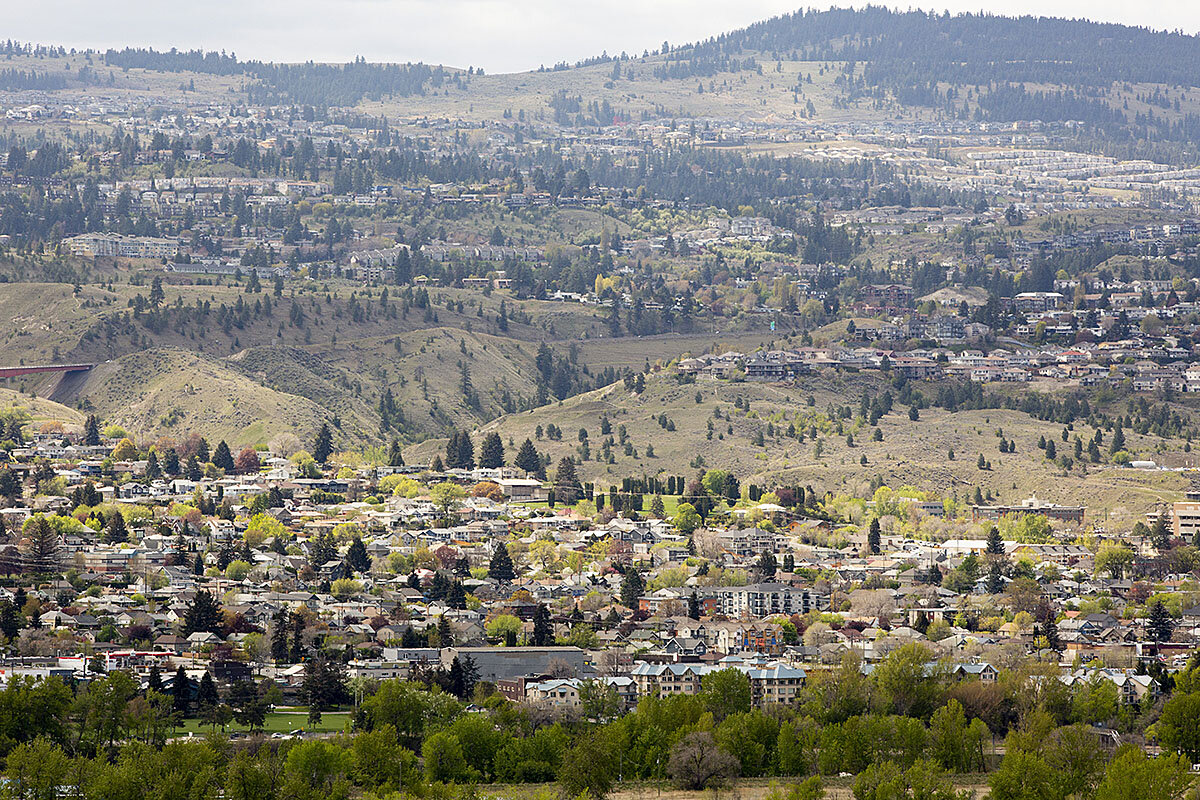
Harrie Vredenburg, the Suncor Energy chair of strategy and sustainability at University of Calgary’s Haskayne School of Business and an executive board member of RP, says this is no handout, nor is it a risk to indigenous groups or Canadian taxpayers. Talks are underway with major Canadian banks to finance the C$6.8 billion acquisition.
All First Nations and Metis in the provinces of Saskatchewan, Alberta, and British Columbia are being invited to join the project, even if they do not live along the right of way. That’s about 340 in total, two-thirds of them in British Columbia. Their shares in RP depend on the degree of impact from the expansion.
Some call the entire idea far-fetched. Others, like Professor Coates, say it’s “reasonably possible” and draws from previous successful ventures. Whether it gets off the ground or not, the proposal itself helps to shift mindsets. “If you’d gone back even three years and talked to ... anybody in Canada, they would have said something really simple, that indigenous people don’t like pipelines,” says Professor Coates. That has always been flawed, he says, but such projects are changing not just the narrative but possibly the game. “It’s very ironic ... that indigenous engagement in the natural resource economy may be protecting it, if not saving it,” he says.
‘We must defend our land’
Reconciliation Pipeline faces no small amount of protest among indigenous communities. The Union of British Columbia Indian Chiefs issued an open letter in April, warning members to reject the proposal. “There are good reasons why Kinder Morgan chose to walk away from this project and you should carefully consider them before investing your Nation’s money,” the letter reads.
Upstream from where Mr. Gottfriedson stood, the project faces some of its most formidable foes: the Tiny House Warriors, who’ve fabricated homes along the expansion project in a bid to stop it. Today they are protesting a workers’ camp that they say will put their women and children in direct danger. Kanahus Manuel, a leader in the movement, says the project does not have the approval of the entire Secwepemc nation, which includes about 10,000 people.
“Our people, we’ve been living the laws of our land, and the laws state that we must defend our land. ... When people side with corporations, they’re going against our laws,” she says in a phone interview. “Some may say, ‘Oh, they’re entitled to their opinion, they could sign this pipeline.’ No, there are laws that are being broken that supersede Canadian [laws].”
In a commentary explaining the Tiny House Warriors resistance, Ms. Manuel wrote, “The spirit of Standing Rock is moving northward,” referring to the Dakota Access Pipeline protests in the United States.
Mr. Gottfriedson says he accepts that not all indigenous communities will be on board, especially on the coast, where many fear environmental marine damage from oil exports. “I respect that; that’s their kitchen table.” But he also says they should respect his: that the status quo is not working, and that it’s time to move beyond managing poverty to managing prosperity.
“We’ve been oppressed for so long. It’s been status quo for people for many generations. … It’s a hard thing to rebuild,” he says.
In 1953, when the Trans Mountain pipeline was originally built, the community was not consulted. The land was essentially expropriated; they only benefited from a right-of-way fee, Mr. Gottfriedson says. Now companies are legally bound to consultation and accommodation guidelines. That’s caused delays, like the court injunction on the Trans Mountain expansion project, but also leveled the field.
“I think people now are starting to look at the future, and looking at more certainty of creating a better quality of life,” Mr. Gottfriedson says. “First Nations now have a say. First Nations now can be engaged if they so choose to be and create those benefits. I know with this project you get one opportunity.”

Fast fashion: Ramadan goes commercial, straining budgets
In the affluent West, consumerism is a sometimes unwelcome addition to the observance of even the holiest of days. Across the Arab world, the month of Ramadan, which emphasizes sacrifice, increasingly is not immune.

- Quick Read
- Deep Read ( 5 Min. )
-
By Taylor Luck Correspondent
Shopping at midnight? Ramadan consumerism is hitting new heights across the Arab world. Clothing fashion lines, makeup, and themed plates, cups, and pillows all cater to those hosting or invited for the fast-breaking iftar meal during the holy month. Households in the Gulf states, Jordan, and Lebanon spend time preparing the perfect home and the perfect look.
Economists and sociologists trace the emergence of Ramadan consumerism to the explosive growth of satellite TV networks in the region. With more families gathering around the television after iftar to watch soap operas, documentaries, or sports on Gulf-based networks, Ramadan has become the advertising Super Bowl of the Arab world. Companies spend up to 65% of their yearly ad budget during the holy month.
Once, says Hussein Khozahe, a Jordanian sociologist and columnist, “women of the house would simply choose how to best observe the month with the resources they had. Now, with the continuous promotions and advertisements everywhere they turn, families are being directed to live and consume at a level that is not only against the spirit of the holiday and Islam, but is often out of their reach.”
Fast fashion: Ramadan goes commercial, straining budgets

Amina was in a dilemma: She had less than 24 hours and nothing to wear.
Within minutes of receiving the invitation, the 30-year-old Jordanian banker booked a stylist for the afternoon before the big event and rushed to a mall at midnight to browse the aisles for the perfect outfit: something glamorous, but not flashy; graceful, but not drab.
The occasion? Ramadan.
“We have to look our best when we are invited during Ramadan,” Amina says. “It is a time when everyone is going to see us and remember how we looked for the rest of the year.”
For many Arab families, advertising, peer pressure, a growing middle class, and Gulf-led consumerism are steering the holy month – traditionally a period of fasting, spiritual reflection, and family affairs – toward a social season of high expectations on par with Christmas in the United States.
Yet social pressures are not only diluting Ramadan’s central message of sacrifice and solidarity with the poor; they are also pushing some Arab families to live beyond their means for the holy month.
In search of the perfect look
Slowly creeping into the holiday the past two decades, Ramadan consumerism is hitting new heights in the region this year. Ramadan fashion lines, makeup, and themed plates, cups, and pillows all cater to the tens of millions of Muslims who either host or are invited for the fast-breaking iftar meal during the holy month.
Western brands such as H&M offer modest designer clothes for iftar meals and even for suhoor, the pre-dawn meal that is often consumed in the privacy of the home in most Arab states.
Households in the Gulf states, Jordan, and Lebanon spend time preparing the perfect-looking home and the perfect look.
“Women want to look their very best during Ramadan to impress their relatives, their in-laws, and neighbors,” says Rommouz Sadeq, whose Jordanian Al Mrayti on-order stylist service sees a spike in business during the holy month. “Socially, it is becoming a more important time than wedding season.”
It is a far cry from Ramadan preparations just 20 years ago, when many Arab families would simply stock up on dates, dried fruits, and special juices and prepare seasonal desserts such as pancake-like qatayef. Decorations were limited to colorful streamers and brass lanterns.
“Before, we would have our meals, pray, and eat qatayef,” says Um Samer, a shopper at an Amman market. “Now our kids want it all: Ramadan juices, Ramadan lights, fancy appetizers.”
Super Bowl of Arab advertising
Economists and sociologists trace the emergence of a Ramadan culture of consumerism with satellite TV networks, which took root in the region in the 1990s and exploded in the early 2000s.
With more Arab families gathering around the television after iftar to watch soap operas, documentaries, or sports on Gulf-based satellite networks, local and international companies began to place ads for food and cleaning products.
Now Ramadan is the advertising Super Bowl of the Arab world, with Middle East companies spending up to 65% of their yearly ad budget during the holy month, as brands compete to win viewers’ attention throughout the month with eye-catching, innovative, and meme-able commercials.
“Before, there were not hundreds of satellite channels or social media to tell families what they should buy and how they should celebrate,” says Hussein Khozahe, a Jordanian sociologist and columnist. “Women of the house would simply choose how to best observe the month with the resources they had.”
“Now, with the continuous promotions and advertisements everywhere they turn, families are being directed to live and consume at a level that is not only against the spirit of the holiday and Islam, but is often out of their reach.”
The advent of smartphones has taken Ramadan advertising to a whole new level.
According to Facebook, people across the Middle East and North Africa spend 5% more time on Facebook during the holy month – an additional 58 million user hours. In Saudi Arabia, Egypt, and the United Arab Emirates, Google reports a 150% increase in views on YouTube of soap operas, 30% more for travel videos, and 27% more in religious content. All the while, viewers are bombarded with themed ads.
Aiding the materialism is the rise in ready-made and frozen foods and kitchen appliances affordable to working and middle-class families – all reducing the preparation of multicourse iftar meals from an entire day to under two hours.
This is coupled with the emergence of restaurants in the Gulf, Jordan, Lebanon, and the West Bank that deliver affordable Arabic cuisine mimicking home cooking, perfect for middle-class families with last-minute iftar hosting.
With the reduced or eliminated cooking time, energies are instead spent on more extravagant dishes, decor, and entertainment, economists say.
“Meals were all homemade and time-consuming, with lots of preparation,” says Jawad Anani, a Jordanian economic analyst and former minister of state for economic affairs. “With affordable home-cooked food now delivered to your door, consumer behaviors have changed, and the basket of goods has grown larger.”
Religious principles
This consumerism runs against not only the spirit of Ramadan – which encourages sacrifice, patience, and restraint to feel with the poor – but even the core tenets of Islam itself.
Multiple passages in the Quran speak out against extravagance. Quranic Chapter 7:31: “eat and drink, but do not be excessive, for God does not love those who waste.”
It is an instance, sociologists and experts say, where cultural norms trump religion.
“This speaks not only to the power of these pressures but the lack of true Islamic education awareness among people in the Arab world today,” says Mr. Khozahe, the sociologist.
Instagram factor
Driving the pressure to impress is social media, with people and influencers sharing elaborate iftar and suhoor spreads on Instagram, Facebook, and other platforms. Instagram has even introduced a “Lantern” filter of stylized crescent moons to encourage users to photograph Ramadan celebrations.
Families, particularly mothers and wives, are not only “keeping up” with the neighbors, but also competing with complete strangers across the Arab world.
In a recent essay for BBC Arabic, Emirati writer and magazine chief editor Manar Al Hinai describes attending an extravagant private suhoor gathering featuring live music, restaurant catering, and even an entire ice cream truck. She goes on to speculate that the hostess borrowed money for the display.
“Why do some people borrow money for appearances?” Ms. Al Hinai writes in the essay.
“Maybe the reason is the effect of social network platforms that allow many to enter the homes of different segments of society and look at their Ramadan events and preparations, which encourages comparisons and competition to try to keep pace so as not to appear less than their peers.”
Some families in the Gulf and Jordan go into debt during Ramadan to keep up with the 29 days of hosting and visits, which can cost up to twice their monthly income.
“We host my family, my wife’s family, and the neighbors. That is iftars, sweets, and coffee for over 100 people,” says Abu Saed, a civil engineer and father of three, adding that he has borrowed $700 the past two Ramadans from banks and relatives to make it through the month.
“Being invited doesn’t lessen the burden. We have to bring a gift each time!”

Japan loves its top tennis star. But do they think she’s Japanese?
Who counts as Japanese? The island nation has started to wrestle with questions of diversity later than many of its peers. Lately, one young tennis phenom has had to carry much of that heavy conversation on her shoulders.

- Quick Read
- Deep Read ( 5 Min. )
At the Kyodo Indoor Tennis School in suburban Tokyo, one kind of merchandise is flying off the shelves: anything associated with Naomi Osaka.
Since September, when she beat Serena Williams for the U.S. Open title, Ms. Osaka has been the reigning champ of women’s tennis. In Japan, the country for which she competes, she’s become a household name. Companies making everything from cars and cosmetics to instant noodles have raced for endorsement deals.
But as she catapults onto the world stage, the half-Haitian, half-Japanese star with dual citizenship in the U.S. and Japan is intensifying discussions around Japan’s own identity.
“The unwritten rule” to being Japanese, writes Baye McNeil, an African American columnist for The Japan Times, is “looking Japanese.”
Deemed one of the most homogeneous countries on earth, modern Japan has long struggled to integrate people who don’t meet traditional ideas of “Japaneseness,” often rooted in ethnic identity. With an aging and shrinking population, though, the government has decided that allowing more foreigners in is a matter of economic survival.
Japan loves its top tennis star. But do they think she’s Japanese?
September was a very good month for Masao Tsutsumi.
Mr. Tsutsumi, who piloted Nissan’s sponsorship of Naomi Osaka, latched onto the young tennis star before she became a household name in Japan. When he’d first broached Ms. Osaka’s name to his team mid-2018, their response was lukewarm: “But she’s only No. 17 in the world.”
Then came September 2018. Within a week, Ms. Osaka beat Serena Williams for the U.S. Open title, jetted to Japan, and headlined a press conference at Nissan’s gleaming headquarters in Yokohama. When a Nissan executive asked about her favorite car, her response was broadcast for the world to hear: GT-R.
It was Nissan’s flagship sports car, the one that goes 0 to 60 mph in under three seconds – seemingly like the career of Ms. Osaka, who is now No. 1 for women’s singles, and the first Japanese player to achieve that ranking. A special Osaka-branded edition GT-R marketed only in Japan sold out within a month.
“My boss told me, ‘You’re a lucky guy,’” Mr. Tsutsumi says with a chuckle, basking in the glory of a corporate sponsorship purchased when the stock, as they say, was underpriced. “We came after Citizen [watches], and everyone else came after.”
Ms. Osaka has been a huge draw for brands seeking to grasp onto a rising star with appeal across cultures: Yonex sports gear, Nissin Foods, Shiseido cosmetics, and All Nippon Airways have also jumped on board. Yet, as she catapults onto the world stage, the half-Haitian, half-Japanese star’s popularity is intensifying discussions around ethnic identity and multiculturalism in a country deemed one of the most homogenous on earth. Her rise comes at a poignant time, as Japan struggles with an aging and shrinking population; the government has decided that allowing more foreigners into the country is a matter of economic survival.

‘Unwritten rule’ to being Japanese
By now, Ms. Osaka’s story is familiar to many Japanese; she was born in Japan to a Haitian father and Japanese mother. By the time she was four, her family had relocated to the United States. Later, her parents had their dual-citizen daughter represent Japan in international competitions, laying the groundwork for her to be a Japanese star.
Yet as a half-black woman, Ms. Osaka “does not meet the social prerequisites for full Japanese acceptance,” according to Baye McNeil, an African American columnist for The Japan Times. “The unwritten rule” to being Japanese, Mr. McNeil writes in an email, is “looking Japanese.”
Indeed, in modern times, Japan has struggled to integrate foreigners into society, and debated how porous its borders should be. This reluctance is rooted in a number of phenomena, including an imperial past that promoted Japanese as racially superior. Post-World War II, the government did little to protect minorities against discrimination in the housing and job markets. Many older Japanese associate the success of the country’s postwar economic growth with its homogeneity, says Waseda University sociologist Shunsuke Tanabe. “A certain number of people believe in this ‘myth.’”
One lingering effect is firm resistance to immigration. Today, foreigners make up only about 2% of Japan’s total population. Right-wing tabloids have not been kind to Ms. Osaka – remarking, for example, that she speaks poor Japanese – while The Japan Times published an op-ed called “How Japanese is Naomi Osaka?” which suggested her decision to play for Japan was motivated by profit, though the writer concludes she is “very Japanese.”
Meanwhile, advertisers have made missteps. In January, instant noodle-maker Nissin Foods released an image of Ms. Osaka that Westernized her features and lightened her skin. It was created by a popular manga artist, and branding expert Alan Casey says Nissin didn’t necessarily stray “outside the visual cues of manga – size of the eyes, size of the hair, super-exaggerated and often very Western, like an inconceivably small chin.”
“[Nissin] simply weren’t aware of the issues around racial discrimination around the world,” Professor Tanabe says, calling Japanese society “about 30 years behind the global trend.”
Even so, the public backlash was immense and immediate. Nissin offered an apology, promised to be more sensitive, and halted the campaign.
‘Bridging’ the distance
Yet for most Japanese, Ms. Osaka’s mannerisms “bridge the distance,” sociologists say. She’s soft-spoken. She has a trademark humility so prized by Japanese culture. She loves matcha green tea ice cream. She also wins major tournaments.

Everyone loves a winner.
Indeed, Ms. Osaka is popular in Japan, full stop. A year ago, only 7 of 10 Japanese knew of her, according to Hakuhodo DY Media Partners surveys. “Now almost all Japanese know her name,” says Koki Takekata of Hakuhodo. In Hakuhodo surveys, respondents describe her as cheerful, friendly, and powerful.
In general, acceptance may be growing for people outside “traditional” ideas of Japaneseness. A Pew Research Center study in 2018 found that 59% of Japanese believed immigrants make Japan stronger due to their work and talents, though only 23% want to see immigration increase. In 2018, Okinawa prefecture elected the country’s first biracial governor, the son of a U.S. Marine and Japanese mother.
In Ms. Osaka’s case, it may ultimately be official nationality that the Japanese care about. According to Japanese law, Ms. Osaka must choose between her U.S. and Japanese passports before the age of 22 (though the law has never been enforced). But what if she chooses American citizenship? And what if she stops winning?
“I think Naomi Osaka helps in the short-term [with acceptance] for mixed-race individuals,” says Erin Chung, director of the East Asian Studies program at Johns Hopkins University. “But I don’t think it will eradicate racism in Japan.”
Inspiring the next generation
Hideaki Morinaga will worry about such philosophical issues another day; for now he’s basking in the energy Ms. Osaka has breathed into his suburban Tokyo tennis club.
The day after her U.S. Open win, his phone at Kyodo Indoor Tennis School began ringing. “They wanted tennis classes for their kids,” Mr. Morinaga says, with a grin. He added four classes a week, with enough demand for a waitlist.
Club members also wanted Ms. Osaka’s branded merchandise, which began moving off the shelves of the club’s tiny shop: Yonex Ezone 98 rackets. Poly Tour Strike 125 strings. Yonex’s Pro series racket bags. Adidas sneakers (which she’s since left for Nike).
“Tennis lovers are very happy to have Naomi winning,” Mr. Morinaga says. “She’s a Japanese winning major competitions.”
Nearby, Yukiko Tani waits for her children to finish a lesson. Her 13-year-old son took inspiration from Japanese tennis star Kei Nishikori, while her daughter worships Ms. Osaka. “We’re going to apply for Olympic tickets,” Ms. Tani says, in hopes of seeing her play at the Tokyo games.
This summer, Ms. Tani will send her son to Malaysia for a British-run tennis camp. Her kids already attend school with many multiracial students, Ms. Tani says, and she’d like them to become even more comfortable with a multicultural environment. It’s where the world is headed.
“Kids are very accepting,” Ms. Tani says.

Film
What sparks creativity? Best May movies tackle the Bard and folk music.
Film critic Peter Rainer’s top choices in May include Kenneth Branagh’s return to Shakespeare in “All Is True,” and documentaries featuring folk rock’s roots (“Echo in the Canyon”) and an outdoor installation by artist Christo (“Walking on Water”).

-
By Peter Rainer Film critic
What sparks creativity? Best May movies tackle the Bard and folk music.
Critic Peter Rainer’s top picks for May include films that take viewers inside the creative process of folk musicians, an environmental artist, and Shakespeare.
‘All Is True’ ponders why Shakespeare put down his quill
Has there ever been so much speculation about a life so little known as William Shakespeare’s? The latest entry in the post-“Shakespeare in Love” sweepstakes is the engrossing, uneven “All Is True.” Directed by and starring Kenneth Branagh as the Bard, it picks up at the end of Shakespeare’s life, when, in 1613, he left London following a catastrophic fire at the Globe Theatre and returned to his family in Stratford-upon-Avon, never to write again.
Why did he stop? This is the film’s central conceit, and Ben Elton, who wrote the screenplay, is at no loss for answers. It may seem presumptuous to, in effect, psychoanalyze a writer who, perhaps more than any other, plumbed the depths of the human psyche. Still, Branagh and Elton understand that the man who wrote the plays and the man who lived his life are not indistinguishable. Put bluntly, even those who fully fathom the human heart may have trouble fathoming their own.
Shakespeare reveals his true colors in the film’s best scene, a friendly hearthside meeting between Shakespeare and Henry Wriothesley, the Earl of Southampton (Ian McKellen), his longtime benefactor and, it’s implied, one-time lover. Their talk has been polite and prosaic, and then Shakespeare gently recites, in full, his 29th sonnet, which begins, “When, in disgrace with fortune and men’s eyes.” We realize, if we did not already, that there is no disconnect between this recitation and the mundane-seeming man speaking the words. The poetry resides in him in full.
The moment is capped when the earl, in a marvelous rendition by McKellen, recites back to Shakespeare the same sonnet. Aside from being a master acting class in dueling poetic interpretations, this sequence is one of the most quietly impassioned dialogues I’ve ever seen in a movie. Given the impossibility of crafting William Shakespeare into a believable human being, the film is an honorable try. Grade: B+ (Rated PG-13 for thematic elements, suggestive material, and language.)
Folk rock greats recall LA enclave in ‘Echo in the Canyon’
Early in the fascinating documentary “Echo in the Canyon,” rock legend Eric Clapton describes why, at the start of his career, he gravitated to the hilly Los Angeles enclave of Laurel Canyon. “I was attracted to eccentrics,” he says, “and they were all there.”
The eccentrics to which he is referring made up some of the greatest talents of the folk rock era covered in the film’s 1964-68 time frame. These include such luminaries as David Crosby, Stephen Stills, Brian Wilson, Roger McGuinn, and Graham Nash, all of whom are interviewed in the movie.
If you care anything about the music of groups like The Byrds, Buffalo Springfield, The Mamas and the Papas, The Beach Boys, or Crosby, Stills, Nash & Young, the ramshackle, engagingly anecdotal “Echo in the Canyon” is required viewing. What makes this more than just a movie for fans of that music – and what music! – is that it delves into what made that era such a creative cauldron, comparable in some ways, as the film points out, to Paris in the 1920s and ’30s.
The ways in which these artistic inspirations abounded and cross-fertilized is the central theme of “Echo in the Canyon.” Perhaps by necessity, this approach downplays some of the darker aspects of that era. Drug anecdotes are mostly presented lightheartedly, and Wilson’s harrowing psychological battles go unremarked. Including such material would have made for a richer panorama, but the focus here is on the conviviality of those Laurel Canyon years and the creative ferment and idealism that came out of it. As Nash says, looking back, “I still believe music can change the world.” Grade: B+ (Rated PG-13.)
Chatty ‘Non-Fiction’ explores whether anything is truly made-up
Olivier Assayas’ “Non-Fiction,” starring Juliette Binoche, is about writers and publishers and bourgeois intellectuals and affairs, extramarital and otherwise. But most of all it’s about talking. It’s practically a nonstop jabberathon. What rescues the film from tedium is that much of the talk is enticing.
Almost from the beginning we are plunged into the world of words. Everybody seems to have an opinion about the state of literature in the digital era. Publisher Alain is wary about where his business is heading. Are e-books really the wave of the future? In one conversation, a writer guest opines, not altogether unhappily, that more people read his blog than his books. Tweets are described as modern-day haiku. Alain’s TV actress wife Selena (Binoche, in the film’s best performance)is defiantly old school and declares she will never read a book on a tablet.
This sort of discussion, extending throughout the movie, may seem too “inside” for even the film’s intended art house audience. But what keeps the talk from being merely a pileup of shopworn pensées is that Assayas, who also wrote the screenplay, is less interested in what these people are saying than in why they are saying it. Beneath all their righteous intellectualizing sits a big blob of personal insecurities.
Assayas is operating on a breezier plane than usual, as evidenced by a scene in which writer Léonard inquires about a good candidate to record his audiobook and Selena answers “Juliette Binoche.” It’s a smart-dumb joke that carries the nonfiction of “Non-Fiction” too far. Even in a movie about the reality of unreality, some illusions should be maintained. Grade: B+ (In French with English subtitles. Rated R for some language and some sexuality/nudity.)
Tender ‘Photograph’ is the antidote to Bollywood clichés
“Years from now when you look at this photo, you’ll feel the sun on your face.” These are the opening words spoken in “Photograph” by Rafi (played by Nawazuddin Siddiqui) to tourists in Mumbai as they congregate around the Gateway of India monument. He makes his meager living snapping instant photos of them, and his hard-sell patter has a practiced ease.
One of the tourists is Miloni (Sanya Malhotra), a shy young woman studying to be an accountant. Rafi takes her picture but she runs off before the transaction is completed. There is an overriding reason to track her down: Rafi’s grandmother (played with aplomb by Farrukh Jaffar in the film’s liveliest performance) has made it known that she will stop taking her medicine until her grandson finds a wife.
India is a country of strict class distinctions, and Rafi, who is poor and uneducated, has no illusions that the bourgeois Miloni will fall for him. But, for his grandmother’s sake, he devises a scheme that, surprisingly, once he finds her, she agrees to. She will pose as his fiancée, at least until he finds a real one, in order to allay his grandmother’s fears. Matters complicate when the grandmother arrives in Mumbai from her village for an up-close look-see.
Director Ritesh Batra is aware of the story’s inherent sentimentality, even to the point of drawing implicit parallels between Rafi and Miloni’s predicament and the standard tropes in Bollywood movies, with their spangly love stories and family intrigues. But what Batra is reaching for here is the fairy tale beguilements of Bollywood romance – without all the hoopla. He wants to tenderize the Bollywood clichés and bring the essence of their ardor into the real, teeming world of Mumbai. To a fairly large degree, he succeeds. Perhaps Batra was wary of too spirited an approach lest he highlight the story’s clichés. He needn’t have worried. He’s a rarity in the movie business: a romantic without a trace of schlock. Grade: B+ (Rated PG-13 for some thematic material. In Hindi and English with English subtitles.)
‘Walking on Water’ goes behind the scenes with artist Christo
Five years after his wife and creative collaborator Jeanne-Claude died in 2009, the controversial environmental artist Christo began work on a project they had conceived decades earlier, an art installation called “The Floating Piers” that would give people the sensation of walking on water.
Situated in three different locations on Lake Iseo in northern Italy, the piers, all converging on a small island offshore, would consist of interlocking polyethylene cubes wrapped in yellow cloth. The streets leading up to the piers would also be cloth-covered, and the entire expanse of floating walkways would span 1.9 miles.
Whether you deem this project an extravagant boondoggle or a masterpiece, you have to admire Christo’s tenacity in finally making it happen, as chronicled in the documentary “Walking on Water,” directed by Bulgarian writer-director Andrey Paounov. The film is free-form, with no voice-over narration or staged interviews. Its fly-on-the-wall aspect should not, however, be taken as a guarantor of “truth.” Everybody, from Christo and his burly, bearded operations manager and nephew Vladimir Yavachev on down to the local authorities, is well aware they are being filmed. In fact, some of Christo’s many tantrums seem directed as much to the camera as to his targets.
I would imagine that these environmental artworks are best – perhaps only – experienced in the field. But it’s still possible to gasp at what is shown us in “Walking on Water,” if only from a logistical standpoint. The massive planning required for such a project is revealed in mind-numbing detail. When Christo yells at his crew for unwrapping the fabric too soon – “Do not open fabric!” he howls – you can almost sympathize with him. This is how “geniuses” behave. Or at least this is what the film would have us believe. Grade: B+ (Unrated.)
Other headline stories we’re watching
(Get live updates throughout the day.)The Monitor's View
Africa’s big start toward freedom from poverty
- Quick Read
- Deep Read ( 2 Min. )
-
By the Monitor's Editorial Board
At a time when Britain may leave the European Union and President Donald Trump is putting up protectionist tariffs against many countries, Africa is rushing in the opposite direction, toward more inclusion and a sense of belonging.
On Thursday, an agreement to set up an African Continental Free Trade Area came into force. Nearly half of the countries, or 24, have ratified it, which means they will now negotiate the details of implementing it. Another 27 have signed only, perhaps waiting to see how it plays out.
While removing trade barriers or ending revenue from customs taxes will not be easy, the agreement’s potential is huge. It could create the world’s largest free-trade zone, not only in population but in combined gross domestic product.
One immediate effect of the pact is that it sends a signal that Africa can unify around a common future. Such a shift in attitude will be welcomed by investors. A future that includes a free-trade zone from Cairo to Cape Town speaks of a level of trust and cooperation – something needed in other parts of the world.
Africa’s big start toward freedom from poverty
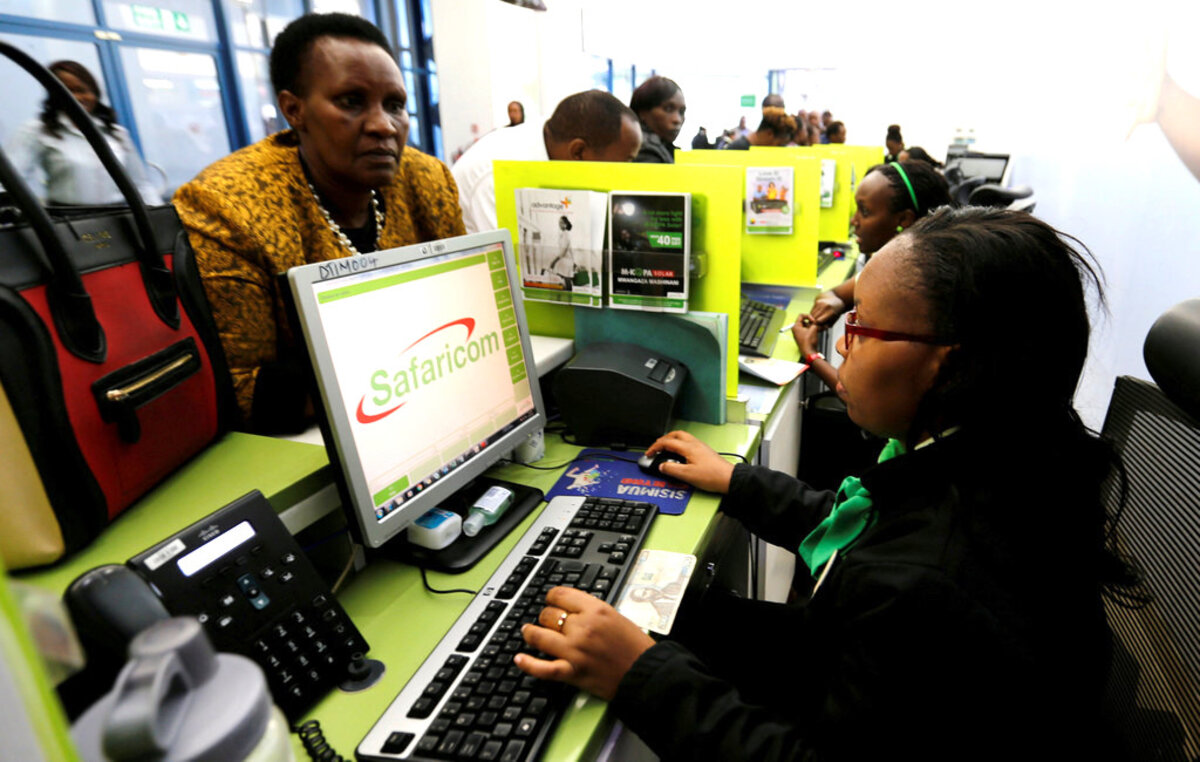
More than a third of Africa’s 1.2 billion people have lately considered emigrating, according to a poll. Many of them eye Europe as the desired destination. The reasons are not hard to find. Africa is home to 28 of the world’s poorest countries. Half of its residents live in poverty. Yet of all the solutions being tried to end Africa’s woes and keep its people from leaving, is there one that stands out?
Yes, says scholar Jakkie Cillers, head of South Africa’s Institute for Security Studies. He has crunched the numbers on 11 possible pathways to prosperity in Africa, such as a leap in education, a surge in democracy, and an end to violent conflict. Under his forecast, the greatest impact would be a free-trade zone across the continent’s 55 countries. By 2050 such a European Union-style zone could reduce poverty more than the other steps. (In second place would be a revolution in agriculture.)
His calculations are well timed. On Thursday, an agreement to set up an African Continental Free Trade Area came into force. Nearly half of the countries, or 24, have ratified it, which means they will now negotiate the details of implementing it. Another 27 have only signed it, perhaps waiting to see how it plays out. Nigeria, the second largest economy, has hinted it will join.
While removing trade barriers or ending revenue from customs taxes will not be easy, the agreement’s potential is huge. It could create the world’s largest free-trade zone, not only in population but in combined gross domestic product.
At a time when Britain may leave the EU and President Donald Trump is putting up protectionist tariffs against many countries, Africa is rushing in the opposite direction, toward more inclusion and a sense of belonging.
One good reason is that African leaders see increased trade among their countries as a way to curb security threats, such as terrorism and civil wars. By 2050, Africa will have more young people than India or China. If they are unemployed, as a great number are now, they could be fertile ground for those inciting conflict.
The new pact has far to go. Only 15% of trade in Africa is between countries. By contrast, trade within the EU is 67%. Africa also has large distances, rough terrain, and low-quality infrastructure. It has relied too long on exports of mineral resources to other parts of the world as well as on foreign aid. Manufacturing makes up only 9% of Africa’s economy.
One immediate effect of the pact is that it sends a signal that Africa can unify around a common future. Such a shift in attitude will be welcomed by investors. A future that includes a free-trade zone from Cairo to Cape Town speaks of a level of trust and cooperation – something needed in other parts of the world.

A Christian Science Perspective
Each weekday, the Monitor includes one clearly labeled religious article offering spiritual insight on contemporary issues, including the news. The publication – in its various forms – is produced for anyone who cares about the progress of the human endeavor around the world and seeks news reported with compassion, intelligence, and an essentially constructive lens. For many, that caring has religious roots. For many, it does not. The Monitor has always embraced both audiences. The Monitor is owned by a church – The First Church of Christ, Scientist, in Boston – whose founder was concerned with both the state of the world and the quality of available news.
A hidden stream reveals a healing message
- Quick Read
- Read or Listen ( 3 Min. )
-
By Laurie Toupin
When her hands seized up and wouldn’t open, today’s contributor found peace and healing as she considered the idea that even when circumstances suggest otherwise, our God-given health cannot be altered.
A hidden stream reveals a healing message
I was walking the dogs in the woods one day this winter when I heard the most beautiful sound: the bubbling and gurgling of running water nearby. I looked around to locate the source, but there was no water to be seen!
I realized I was walking on top of a stream, yet there was no visible evidence of its existence. I stood transfixed, listening and enjoying the sun sparkling on the fresh snow that covered this little gem, hiding it from sight.
For me, there was something magical and exciting about my discovery. I felt I had stumbled upon some secret watery passageway discernible only to someone who was listening.
I saw a parallel here to what I’ve learned in Christian Science about one’s true nature and identity. As the children, or spiritual offspring, of God, we express His qualities. Our God-given health, goodness, beauty, are unassailable. Yet sometimes they seem covered up – by sickness, deformity, or some other inharmony. As with that stream, sometimes we need a “spring thaw,” a fresh way of looking at things, to help us see what is always there!
This brought to mind a beautiful healing I had a few years ago after my hands began to seize up one evening. They curled into a fist, and I could not unravel them.
Neither my husband nor I had ever experienced anything like that before. But rather than feeling alarmed, I immediately began thanking God for His constant care.
That may sound a bit strange, but I have always turned to God for help no matter what the situation, and answers have come. The Bible promises, “The Lord is my rock, and my fortress, and my deliverer” (Psalms 18:2). And not just one time, but all the time.
As one of my church’s two elected Readers at the time, I was responsible for reading part of the Christian Science Bible Lesson during the Sunday service the following morning. I would need to use my hands to read the Lesson-Sermon, which consisted of various passages from the Bible and the textbook of Christian Science, “Science and Health with Key to the Scriptures” by Mary Baker Eddy.
Still, I did not feel pressed or panicked. I was encouraged by a passage in the Bible that tells us our “life is hid with Christ in God” (Colossians 3:3). To me, this meant that no matter what my body was telling me, true life and health are spiritual and can never be altered, deformed, or compromised. They remain perfect, intact, and whole, maintained by our Father-Mother God, who created all of us in His spiritual image.
Through Christ, God’s message of love and care, as seen in the healing love expressed by Christ Jesus, we are able to discern this reality and experience it in our lives. Science and Health explains: “All reality is in God and His creation, harmonious and eternal. That which He creates is good, and He makes all that is made. Therefore the only reality of sin, sickness, or death is the awful fact that unrealities seem real to human, erring belief, until God strips off their disguise” (p. 472).
To me, this was similar to my unseen stream. My eyes were telling me one thing, but my spiritual intuition was speaking to me about a very different reality right at hand: God’s reality. Which was I going to believe? I refused to accept a limited, mortal version as the “real me” and chose God’s reality.
I slept well that night, but when I woke, I still could not open my hands. My husband lovingly helped me get ready for church.
I continued to give God thanks for His loving care, and I mentally reached out to hear that stream under the snow – the renewing flow of divine inspiration filled with goodness, joy, freedom, and peace that God constantly sends us.
I was able to fulfill my role as Reader that morning, and by the time the service was over, my hands were completely free. I could use them normally and have continued to do so in the years since.
Our real life, health, prosperity, cannot be altered or misshaped by matter. Everyone’s true, perfect, spiritual self is always “hid with Christ in God” – perhaps hidden from the physical senses but seen in the spring of spiritual understanding that brings comfort and healing.

A message of love
King of the thrill

A look ahead
Come back Monday, when we’ll have a fascinating audio discussion on China’s young generation and what it knows about Tiananmen Square, with Beijing bureau chief Ann Scott Tyson and two Monitor staffers, one from Beijing and one from Hong Kong.



